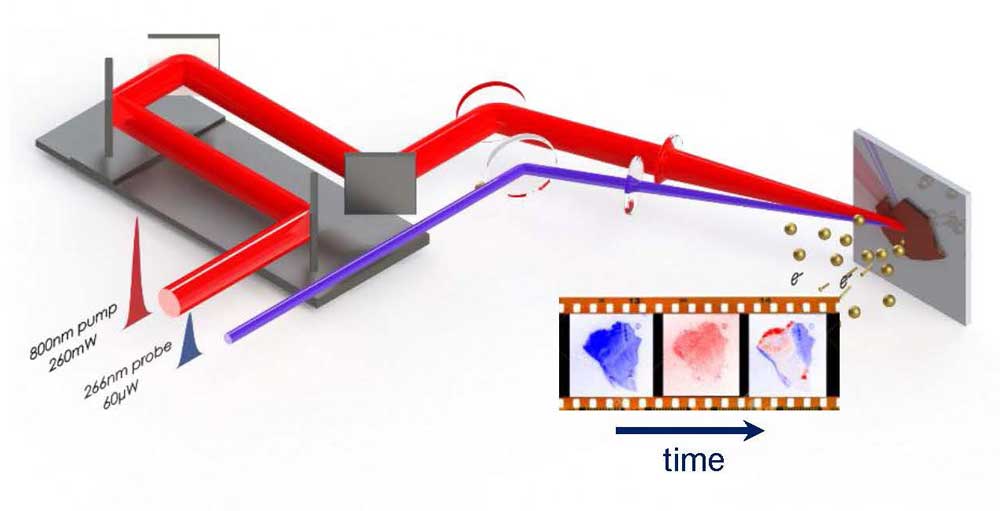Understanding Photoemission Spectroscopy in Material Science
What is Photoemission Spectroscopy?
Photoemission spectroscopy (PES) is a powerful analytical technique used to study the electronic structure and chemical composition of materials. It is based on the photoelectric effect, where electrons are emitted from a sample upon exposure to light. By analyzing the kinetic energy and intensity of the emitted photoelectrons, PES provides valuable information about the occupied electronic states, binding energies, and elemental composition of the sample.

Principles of Photoemission Spectroscopy
The fundamental principle behind PES is the conservation of energy. When a photon with energy hν interacts with a sample, it can cause the emission of an electron if the photon energy exceeds the binding energy of the electron. The kinetic energy of the emitted photoelectron (Ek) is given by:
Ek = hν - Eb - Φ
where Eb is the binding energy of the electron with respect to the Fermi level, and Φ is the work function of the sample, which is the minimum energy required to remove an electron from the sample to the vacuum level.
By measuring the kinetic energy distribution of the photoelectrons, PES provides a direct probe of the occupied electronic states in the sample. The binding energy can be determined from the measured kinetic energy using the above equation, revealing information about the energy levels, band structure, and chemical environment of the elements present in the sample.
Types of Photoemission Spectroscopy
There are two main types of PES, distinguished by the energy range of the photons used:
X-ray Photoemission Spectroscopy (XPS)
XPS, also known as Electron Spectroscopy for Chemical Analysis (ESCA), uses X-ray photons (typically Al Kα or Mg Kα) with energies in the range of 100-1500 eV. XPS is highly surface-sensitive, probing the top few nanometers of the sample. It provides quantitative information about the elemental composition, chemical states, and electronic structure of the sample.
Ultraviolet Photoemission Spectroscopy (UPS)
UPS uses ultraviolet photons (typically from a He discharge lamp) with energies of 10-100 eV. UPS is even more surface-sensitive than XPS, probing only the topmost atomic layers of the sample. It is particularly useful for studying the valence band structure and work function of materials.
Applications of Photoemission Spectroscopy
PES finds applications in a wide range of fields, including materials science, nanotechnology, surface chemistry, and condensed matter physics. Some key applications include:
Material Characterization
PES is extensively used for the characterization of various materials, such as semiconductors, metals, oxides, and nanomaterials. It provides information about the elemental composition, stoichiometry, and chemical states of the constituent elements. PES is particularly useful for studying surface and interface properties, which are crucial for understanding the behavior of nanomaterials and devices.
Electronic Structure Determination
PES is a powerful tool for investigating the electronic structure of materials. It can reveal the occupied electronic states, band structure, and density of states (DOS) of the sample. This information is essential for understanding the optical, electrical, and magnetic properties of materials and designing functional devices.
Surface and Interface Analysis
PES is highly sensitive to the surface and interface regions of materials. It can probe the chemical composition, bonding environment, and electronic structure of surfaces and interfaces, which play a crucial role in determining the properties and performance of nanoscale devices. PES is particularly useful for studying adsorption, catalysis, and surface reactions.
Advantages and Limitations
PES offers several advantages as an analytical technique:
- High surface sensitivity, probing only the topmost atomic layers of the sample
- Quantitative elemental and chemical state analysis
- Direct measurement of the occupied electronic states and binding energies
- Non-destructive and suitable for a wide range of materials
However, PES also has some limitations:
- Requires ultra-high vacuum conditions to minimize surface contamination and scattering of photoelectrons
- Limited probing depth, typically a few nanometers
- Insulating samples may suffer from charging effects, requiring charge compensation techniques
- Interpretation of complex spectra may require advanced data analysis and theoretical modeling
Future Perspectives
Advances in synchrotron radiation sources and electron analyzers have greatly enhanced the capabilities of PES. High-brightness, tunable synchrotron radiation enables high-resolution PES measurements with improved energy and spatial resolution. The development of time-resolved PES techniques, such as pump-probe spectroscopy, allows for the study of ultrafast dynamics and transient states in materials.
The combination of PES with other complementary techniques, such as scanning probe microscopy and electron microscopy, provides a multidimensional understanding of the structural, electronic, and chemical properties of materials at the nanoscale. In situ and operando PES studies, where measurements are performed under realistic operating conditions, are becoming increasingly important for understanding the behavior of functional materials and devices.
As the field of nanotechnology continues to evolve, PES will remain an indispensable tool for unraveling the electronic structure and properties of nanomaterials and advancing the development of novel devices and applications.
Further Reading
Journal of Vacuum Science & Technology A, Introduction to x-ray photoelectron spectroscopy
Physical Chemistry Chemical Physics, Time-resolved photoelectron spectroscopy: the continuing evolution of a mature technique
